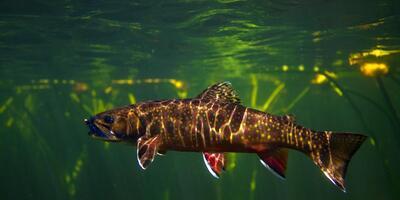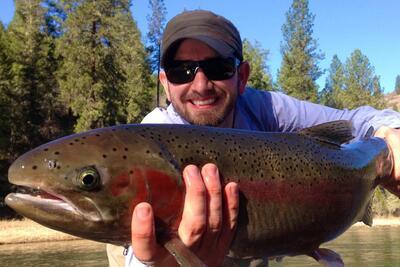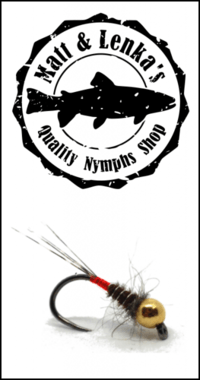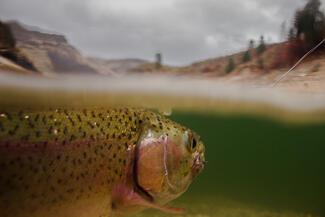
Let me start off by saying that although I love taking pictures of fish underwater, the number one reason I am out on the water is to fly fish. So you won’t find me dipping my head underwater to get that great shot, because that would most likely ruin my day of fishing. Instead I use the approach of sticking my camera underwater, pointing it in the direction of the fish, and taking pictures until my finger is tired.
The best thing about this approach is I never have to touch the fish, it never comes out of the water, and when I am through I simply use my forceps to pluck the barbless hook out of its mouth and watch it swim away. The downside to this is that I never really know if the fish is in the frame, so about 90 percent of my photos are completely unusable. Still, if only one shot comes out, it was worth the effort.
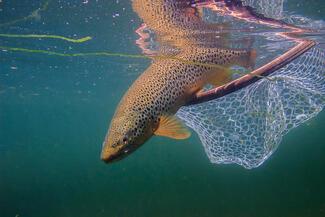
Today you can pick up a decent underwater digital camera from anywhere between $100 and $200. Or if you’re like me, I waited until the $120 camera went on sale for $85, and started shooting.
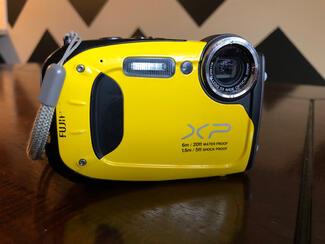
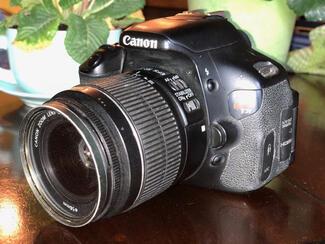
I always had my point and shoot camera on the highest resolution setting it would allow and on the aperture priority setting (AV or A on the settings dial) if it had one. I discovered that on my point and shoot I had to use the scene recognition mode (SR AUTO), because that opened my aperture to work the best for me. I found over time that these aperture settings gave me the best results, but it wasn’t until I got my larger Canon T3i camera that I began to understand why.
Aperture is basically the amount of light that you allow into your camera lens. A very common example is the iris of an eyeball: the iris opens to allow more light to get in when it’s dark, and contracts when it’s bright. Even on a sunny day, as soon as you dip your camera under the water the amount of light that enters the lens is drastically reduced. So having your aperture on a priority setting will help open that lens to produce a better shot with a simple point-and-shoot camera. Five- to ten-inch fish are the best to photograph with such an open aperture setting. Having the aperture set so wide reduces your depth of field, making your focal point in that five to ten inch range; so if you took a picture of a twenty-inch trout the head may be in focus, leaving the tail blurry. Still…allowing the most light into the lens will get you the best shot because of a faster shutter speed or f-stop. The f-stop is the actual clicking noise when you take a picture: the faster that click is, the better. Here is why.
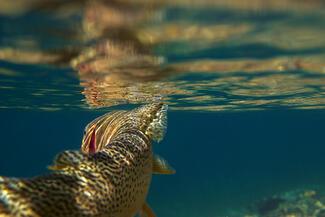
With a fast f-stop you can take pictures of fast things, and a fish flipping around at the end of your line is fast. With your f-stop so fast there is a better chance that your fish will not be blurry in the picture. However, you still need to wait for that opportune moment when the fish stops struggling for half a second to get a great shot. Light entering the lens quickly is important under water, and it is for this reason why I do not add a polarized filter over my camera lens when shooting under water. You simply want to avoid anything that will reduce the amount of light entering your lens.
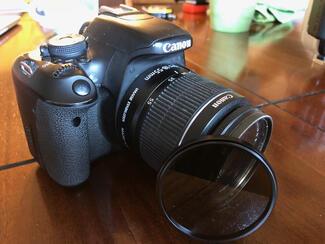
Now let’s take a quick step back. I mentioned using a Canon T3i for my underwater shots, and it should go without saying that in order to use one of these larger cameras you need an underwater housing unit for it. Here is where you can drop some serious coin. Underwater housing for larger cameras vary from a large, heavy-duty sealable bag that costs $90-$200, or the professional diving case that costs the same amount as a new camera: $1,400-$3,000. If you have an older camera like I do, the Canon T3i, you may be in luck. I was able to find an underwater housing unit for $350 that is much like a Go-Pro case, only it fits my Canon.
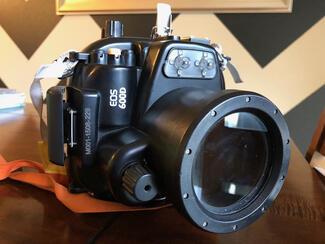
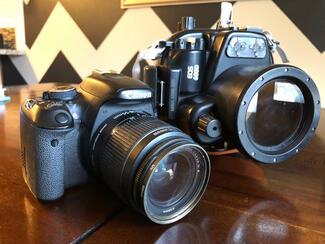
The problem with these lesser expensive underwater housing units is that you are extremely limited when it comes to your lens selection. Smaller portrait lenses will work just fine, but the more coveted lenses for underwater shots are wider lenses that require more space than what the case offers. If you are like me, that’s okay. I’m not looking to plunk down thousands of dollars for a shot of a fish, but if you are, then you may want to consider a more expensive housing unit.
So let’s say you are inspired to get some underwater fish shots. You go out and get a point-and-shoot underwater camera, catch a fish, and take some shots that turn out great. Hooray! There still lies the issue of color. This is where I may lose some purest photographers out there. The most vibrant colors of the fish, like the reds, yellows, and oranges that we love so much, fade away immediately underwater. I recommend using Light Room photography enhancer to play with your image and bring out some lost colors and clarity to your underwater fish.
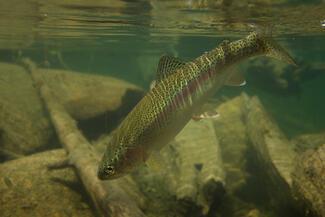
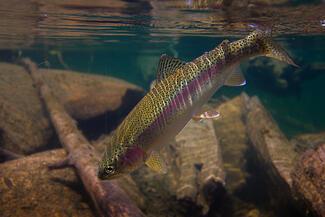
Lastly, if you are using a more advance camera, like my Canon T3i, I recommend shooting in the RAW mode with the lowest ISO you can get away with. I turn my setting to manual with automatic focus switched on, and attempt to get the fastest f-stop possible by opening the aperture with the widest shot my lens will allow. I take a few underwater shots and look at the pictures to see if any adjustments need to be made before I start fishing.
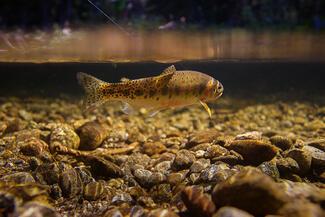
So whether you have a big fancy camera or a point-and-shoot underwater camera, getting that shot of a fish underwater just requires your patience and willingness to try. If you happen successfully take a shot of a fish underwater, use the hashtag #underwatertrout so that I can take a look, even if the fish is not a trout. Or you can post it to my photography page on Facebook “Erik Moncada’s Underwater Trout Photography” to show off your picture. I love seeing fish underwater and would love to see what shots you can produce !
